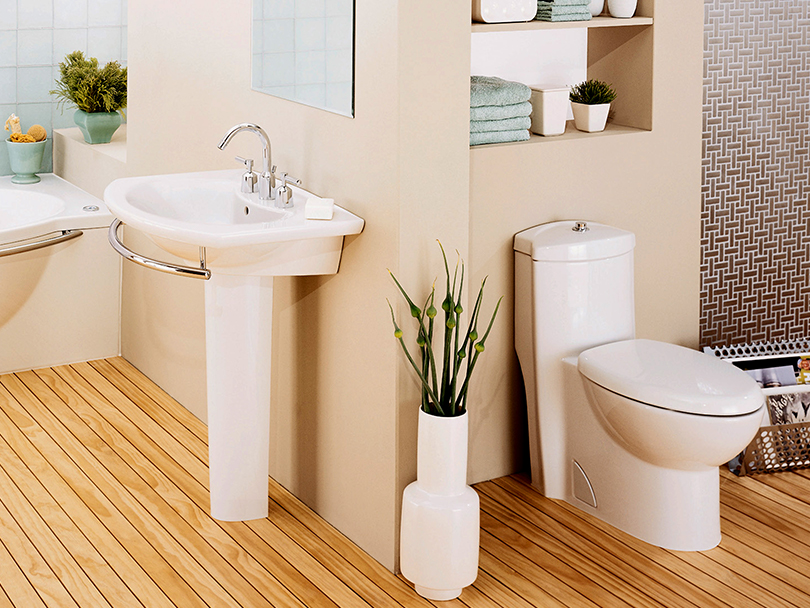By James Dulley
The use of several bathrooms can be responsible for a significant amount of your utility bills year-round. Bathrooms use both hot and cold water; heating and cooling; electricity for lighting and appliances; and vent-out indoor conditioned air. With whirlpools and other comfort appliances, bathrooms are used for more hours today than ever before.
Flushing a toilet is the major cold-water consumer in most bathrooms and the toilet typically is replaced when remodeling. During winter, all the cold water that comes indoors when the toilet is flushed draws heat from the house as the water in the tank warms up. This can be a significant hidden energy loss.
The maximum water usage allowed for new toilets is 1.6 gallons per flush (gpf). Most major plumbing fixture manufacturers also offer 1.28-gpf super-efficient standard-flush and dual-flush models. Since fewer of these super-efficient toilet styles are available, select the toilet first and then match the other fixtures to it.
Showerhead design impacts both cold and hot water consumption. The maximum water flow rate is 2.5 gallons per minute for showerheads, but some low-flow showerheads use half this much. If you have tried older low-flow showerheads and were dissatisfied, give it another shot — the new ones provide a more forceful shower. Select a showerhead with a tickle valve to slow the water flow while you are lathering.
Much hot and cold water is wasted trying to get the shower water temperature where you want it. Select a manual and electronic shower valve which allows the precise temperature to be set on a dial or digitally. The correct temperature is reached more quickly with less water wasted down the drain.
If it takes longer than 30 seconds to get hot water to the shower or sink, as much as two gallons of water can be wasted. Install a do-it-yourself rapid hot water demand kit underneath the sink. When hot water is needed, a high-volume pump draws hot water quickly to the faucet. Instead of cold water being wasted down the drain while waiting, it flows back into the cold-water line. When the hot water gets to the faucet, the pump shuts off. Also, because the hot water gets to the faucet quickly, less heat energy is lost from the plumbing.
Bathroom heating is another energy consideration because you want the heat quickly, but for only a short period of time. A simple 120-volt or more powerful 240-volt radiant system can make you feel comfortably warm without having to heat all the air in the bathroom. This feels similar to standing outdoors in the direct sun on a chilly day.
Electric radiant floor or wall heating is a good choice. Decorative or mirrored radiant wall heating panels warm up and produce heat quickly, so they are ideal for unplanned times in the bathroom. Electric in-floor radiant heat is very comfortable for a bathroom and easy to install under tile. Since it takes somewhat longer to warm up, put it on a timer for typical bathroom usage times.
A high-quality bathroom vent fan with humidity- and/or motion-sensing controls is most efficient. It runs only as long as it is actually needed, so excessive indoor air is not sucked from your house. The newest, most quiet ones may require a larger duct through the attic. Their internal dampers reduce air leakage when the fan is not running.
Select a vent fan with a light fixture and install efficient LED bulbs for general lighting. Also install an adjustable multi-LED lighting fixture. Daylight (4000 K degrees or higher) and high CRI (color rendition index) LED bulbs often make colors look more similar to under real sunlight for applying makeup, shaving, etc.
James Dulley writes utility bill-cutting and general moneysaving magazine articles and writes nationally syndicated $ensible Home and Cut Your Utility Bills columns for 200 newspapers and magazines.

